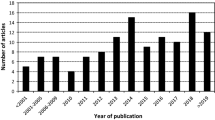Abstract
Background
Autologous bone flaps adequately preserved can be used successfully for repair of cranial bone defects with biological and economic advantages. However, the effect or advantages of cryopreservation of autologous bone flaps using cryoprotectant solutions have not been investigated. The aim of this study was to investigate the utility of autologous bone flaps frozen with glycerol in cranioplasty after decompressive craniectomy.
Methods
We evaluated postoperative complications and clinical and aesthetic results in 40 consecutive patients who underwent delayed cranioplasty using autologous bone flaps frozen with glycerol following decompressive craniectomy between 2001 and 2010. Bone flaps removed at the time of external decompression were dipped in 20 % glycerol solution with a sterilized plastic vessel and stored at −84 °C in an ultra-low temperature freezer. The bone flaps were thawed in the vessel at room temperature for 12 h. The bone flaps were taken out of melting glycerol, replaced in their original positions, and fixed with silk sutures or titanium plates. Follow-up periods ranged from 35 to 3745 days (median, 558 days).
Results
Mild resorption of the bone flap occurred in one case. However, there were no cases with local infection and no cases requiring reoperation for complications during the follow-up period.
Conclusions
Cryopreservation with glycerol is a simple and safe method for preservation of autologous bone grafts. The clinical and aesthetic results of delayed cranioplasty using autologous bone flaps frozen with glycerol solution were satisfactory.

Similar content being viewed by others
References
Asano Y, Ryuke Y, Hasuo M, Simosawa S (1993) Cranioplasty using cryopreserved autogenous bone [Article in Japanese]. No To Shinkei 45(12):1145–1150
Chang V, Hartzfeld P, Langlois M, Mahmood A, Seyfried D (2010) Outcomes of cranial repair after craniectomy. J Neurosurg 112(5):1120–1124
Cheng YK, Weng HH, Yang JT, Lee MH, Wang TC, Chang CN (2008) Factors affecting graft infection after cranioplasty. J Clin Neurosci 15(10):1115–1119
Farrant J (1980) General observations on cell preservation. In: Ashwood-Smith MJ, Farrant J (eds) Low temperature preservation in medicine and biology. Pitman Medical Limited, Kent, pp 1–18
Giovani AM, Croci AT, Oliveira CR, Filippi RZ, Santos LA, Maragni GG, Albhy TM (2006) Comparative study of cryopreserved bone tissue and tissue preserved in a 98% glycerol solution. Clinics (Sao Paulo) 61(6):565–570
Gooch MR, Gin GE, Kenning TJ, German JW (2009) Complications of cranioplasty following decompressive craniectomy: analysis of 62 cases. Neurosurg Focus 26(6):E9
Hanslick JL, Lau K, Noguchi KK, Olney JW, Zorumski CF, Mennerick S, Farber NB (2009) Dimethyl sulfoxide (DMSO) produces widespread apoptosis in the developing central nervous system. Neurobiol Dis 34(1):1–10
Inamasu J, Kuramae T, Nakatsukasa M (2010) Does difference in the storage method of bone flaps after decompressive craniectomy affect the incidence of surgical site infection after cranioplasty? Comparison between subcutaneous pocket and cryopreservation. J Trauma 68(1):183–187
Iwama T, Yamada J, Imai S, Shinoda J, Funakoshi T, Sakai N (2003) The use of frozen autogenous bone flaps in delayed cranioplasty revisited. Neurosurgery 52(3):591–596
Lochte HL Jr, Ferrebee JW, Thomas ED (1959) In vitro studies on the preservation of marrow cells in glycerol at low temperatures. J Lab Clin Med 53(1):117–126
Mase J, Mizuno H, Okada K, Sakai K, Mizuno D, Usami K, Kagami H, Ueda M (2006) Cryopreservation of cultured periosteum: effect of different cryoprotectants and pre-incubation protocols on cell viability and osteogenic potential. Cryobiology 52(2):182–192
Matsuno A, Tanaka H, Iwamuro H, Takanashi S, Miyawaki S, Nakashima M, Nakaguchi H, Nagashima T (2006) Analyses of the factors influencing bone graft infection after delayed cranioplasty. Acta Neurochir (Wien) 148(5):535–540
Mazur P, Leibo SP, Chu EH (1972) A two factor hypothesis of freezing injury. Exp Cell Res 71(2):345–355
Movassaghi K, Ver Halen J, Ganchi P, Amin-Hanjani S, Mesa J, Yaremchuk MJ (2006) Cranioplasty with subcutaneously preserved autologous bone grafts. Plast Reconstr Surg 117(1):202–206
Nagayama K, Yoshikawa G, Somekawa K, Kohno M, Segawa H, Sano K, Shiokawa Y, Saito I (2002) Cranioplasty using the patient’s autogenous bone preserved by freezing—an examination of post-operative infection rates [Article in Japanese]. No Shinkei Geka 30(2):165–169
Rowley SD (1992) Hematopoietic stem cell cryopreservation: a review of current techniques. J Hematother 1(3):233–250
Shimizu S, Morikawa A, Kuga Y, Mouri G, Murata T (2002) Cranioplasty using autogenous bone cryopreserved with dimethylsulfoxide (DMSO)[Article in Japanese]. No Shinkei Geka 30(5):479–485
Shoakazemi A, Flannery T, McConnell RS (2009) Long-term outcome of subcutaneously preserved autologous cranioplasty. Neurosurgery 65(3):505–510
Zingale A, Albanese V (2003) Cryopreservation of autogeneous bone flap in cranial surgical practice: what is the future? A grade B and evidence level 4 meta-analytic study. J Neurosurg Sci 47(3):137–139
Author information
Authors and Affiliations
Corresponding author
Ethics declarations
All procedures performed in studies involving human participants were in accordance with the ethical standards of the institutional and/or national research committee and with the 1964 Helsinki declaration and its later amendments or comparable ethical standards. For this type of study formal consent is not required.
Funding
No funding was received for this research.
Conflict of interest
All authors certify that they have no affiliations with or involvement in any organization or entity with any financial interest (such as honoraria; educational grants; participation in speakers’ bureaus; membership, employment, consultancies, stock ownership, or other equity interest; and expert testimony or patent-licensing arrangements), or non-financial interest (such as personal or professional relationships, affiliations, knowledge or beliefs) in the subject matter or materials discussed in this manuscript.
Rights and permissions
About this article
Cite this article
Takeuchi, H., Higashino, Y., Hosoda, T. et al. Long-term follow-up of cryopreservation with glycerol of autologous bone flaps for cranioplasty after decompressive craniectomy. Acta Neurochir 158, 571–575 (2016). https://doi.org/10.1007/s00701-015-2679-y
Received:
Accepted:
Published:
Issue Date:
DOI: https://doi.org/10.1007/s00701-015-2679-y



